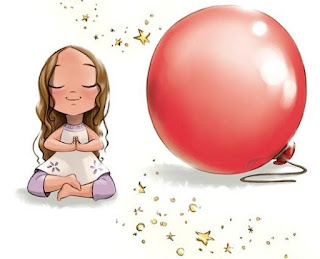Guidance Lesson: Social Boundaries
By: Samantha
Lundberg
Topic: Establishing
appropriate social boundaries
Grade level: Middle
or high school special education students
Rationale
and clear purpose for the unit or lesson:
This
guidance lesson will seek to help students on the autism spectrum or others who
struggle with social interaction to better understand levels of intimacy and
communication within different types of relationships. As a result of this
lesson, students will be able to articulate what types of information should be
communicated to friends, family, community helpers, strangers, and other people
groups. Additionally, they will be able to put the skills into practice by
demonstrating discretion in their communication regarding topics of varying
levels of importance and privacy. Students will learn through both oral
communication and discussion of the ideas and a tangible, hands-on activity
which they can personalize to their own lives.
Applicable
standard(s), objective(s), competency(ies):
As a result of this guidance lesson, students will gain
knowledge and skills related to multiple standards within the ASCA topic of
personal and social development:
PS:
A1.6 Distinguish between appropriate and inappropriate behavior
PS:
A1.7 Recognize personal boundaries, rights and privacy needs
PS:
B1.1 Use a decision-making and problem-solving model
PS:
B1.5 Demonstrate when, where and how to seek help for solving problems and
making decisions
PS:
C1.5 Differentiate between situations requiring peer support and situations
requiring adult professional help
PS:
C1.6 Identify resource people in the school and community, and know how to seek
their help
Introduction
Thank the students and teacher for welcoming you
into their classroom. Say, “Today we are going to talk about something we all
do: talking! We are going to think about who we talk to when we have different
things to say.” Ask the students, “What are some of the qualities of a person
who is trustworthy?”. Call on several students for responses and write them on
the board. Ask the students to then turn to a neighbor and talk about this
question: “What are some of the different types of people in our lives we might
talk to about our ideas, experiences, and feelings?” Allow two to three minutes
of discussion. Bring the class back together and ask students to raise their
hands and share their ideas. Compile a generous list on the white board, making
sure to include the following: family, close friends, acquaintances,
teachers/counselors, and strangers.
Developmental Learning
Activities designed to meet the objective(s)
Introduce the next step by saying, “We
are going to do an activity which will help us think about the best people to
share our ideas and experiences and feelings with.” Pull out the Circle Model. Explain
that “the inner circle is people we can share anything with—people who are very
trustworthy and are the closest people in our lives. Which people should we
write down in this circle?” Write the people as they’re said. Be sure to
include parents, counselors, and closest friends. Move on to the middle circle.
Say, “These are the people we can share many things with, but not everything.
We might know these people a bit, but not as well as the inner circle folks.
Who might be in this circle?” Again, write the responses. Include more casual
friends and extended relatives. End by following the same process with the
outer circle, and be sure to include strangers.
Explain that we will now practice
sharing the right information with the right “circle”. See Appendix A for the
list of proposed example post-it statements. Pass out one post-it note at a
time, and follow this pattern: ask the student to read the post-it note aloud. Allow
for brief discussion and ideas of which circle the post-it note belongs in.
Have the student walk up and stick the post-it note in its proper location.
Continue until all the post-it examples have been placed.
Assessment/Evaluation
Say, “Great teamwork figuring out
whom to share thoughts and feelings with! Now it’s time for
you
all to think about who is in your own circles.” Pass out the worksheets.
Explain that the students should write in the names of real people in their
lives who belong in each circle. Walk around and help students write or
encourage their progress.
Closing and Follow up
Say: “Thanks for your hard work
today. We’re going to leave this group project here in the classroom to remind
you about what we’ve learned today. Remember, school counselors are in that
inner circle, so if you need to share some ideas or thoughts or feelings with
somebody, we can help you!”
Resources
·
Handouts for each student with the circle
model
·
White board and white board marker
·
Large circle model— three circles which
resemble a bullseye
·
Prepared post-it notes with example
statements
Example Statements
I think it’s going to rain today.
My sister got in major trouble at school.
I am feeling so mad I could punch someone.
Riding the bus is the best part of the school day.
Do you know what time third period starts?
I don’t like Jenny. Jenny smells funny.
Sometimes I think I am a big dummy.
I think mashed potatoes are the best food in the entire
world.
My mom and my dad got in a big fight!
I got so sick yesterday I threw up. It was gross!























